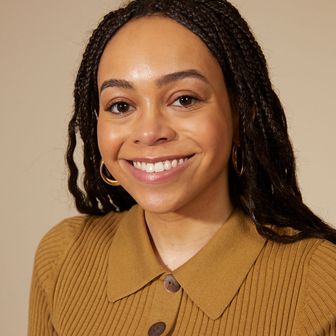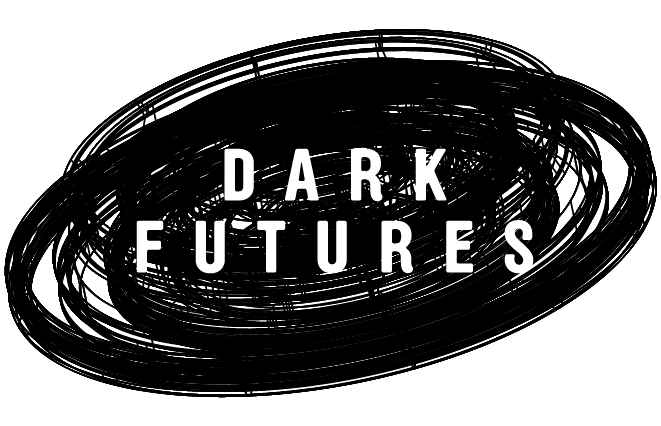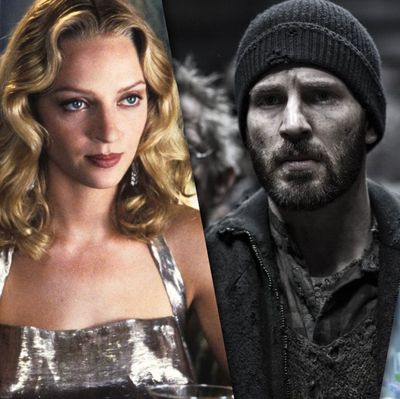
From TV to books to movies, dystopian tales are in the air right now. All week long, Vulture is exploring how they’ve been imagined in popular culture.
By the time the apocalypse hits or we’re under the rule of a dubiously pristine nation-state, we’ll all be wearing jumpsuits. Onesies — the kind you can buy at Urban Outfitters, or see the sales clerks wearing at Glossier — play into every dark-future fantasy. But they’re relegated to the background of three science-fiction dramas — Equals, Gattaca, and Snowpiercer — that challenge our ideas of society’s fate. Instead of pocketless, monochromatic jumpsuits, these movies spotlight costumes that pull inspiration from Japanese construction uniforms, the 1930s, or the military (including an old photo of Muammar Gaddafi). Utility is key, as is the ability to affix a garment with markers of status, to visually denote the haves from the have-nots. For Vulture’s Dark Futures week, we spoke with each movie’s costume designer, and they walked us through sketching and constructing each look from our dystopian future.
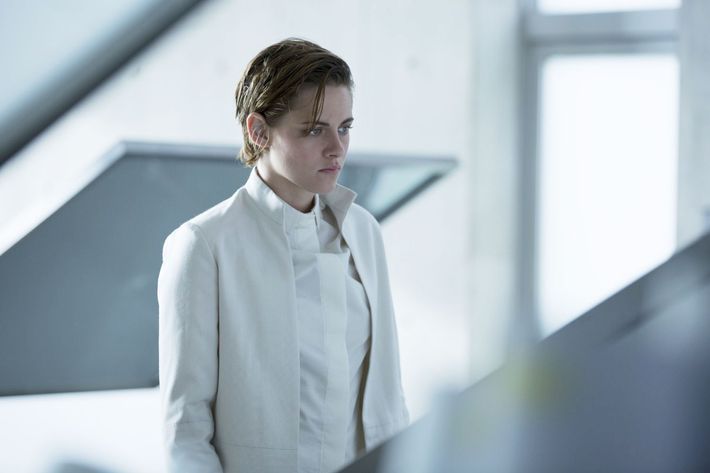
Abby O’Sullivan, Equals
When designing for a future — dark or twisted — it’s best to start with something the audience is familiar with. Abby O’Sullivan, the costume designer behind the Drake Doremus sci-fi romance Equals, uses bomber jackets as an example: “When an audience has an immediate kinship with a piece,” she said, “it really frees you up to do something completely insane underneath it.” Equals is a love story made up of stolen moments in a future where emotions are outlawed. The homogeneous white color palette and workwear aesthetic was developed by Doremus, Carlos Rosario and Alana Morehead, and were part of the movie’s visuals when O’Sullivan signed on mid-production, but she had to find a way to communicate the separations of class and rank. “It was such a unique project in the sense that there was so much uniformity, but at the same time [we] were really trying to figure out how to build the world out from the constraints of that uniformity.” She pulled inspiration from military uniforms and insane asylums: “I looked at a lot of military stuff, but what I really harnessed onto were the uniforms in insane asylums in the early part of the 20th century. That’s what the all white was,” she told Vulture. “There had been a concept artist and concept art that had been [in existence] prior to my coming onto the project. It was cool in a sense that you build out from a generalized silhouette.”
O’Sullivan built that generalized silhouette after seeing the workwear worn by Japanese construction workers on location. “It’s not something that a Western eye is used to seeing. They were just all around the studio where we were working,” O’Sullivan said. Another source of inspiration: medical supplies. “I would just send someone out to buy all of the medical supplies and all of the construction supplies you could find, and then we’d lay them out in this little studio and build the costumes up from there.”
Plain white often films flat, which made fabric with texture essential to making the color palette work on camera. O’Sullivan talked with Doremus about the idea of that world — an environmentally conscious utopia — when choosing fabrics. “[The world was] green and lush, so I used a lot more natural fabrics, like a looser weave, things that didn’t have coating,” she said, “anything that could have been manufactured in the future without damaging the environment.”
So what’s key to imagining how we’ll dress in the a dark future? Figuring out which trends will last through any disaster, under any regime. O’Sullivan has a hunch: “After the apocalypse, it’s gonna be military surplus stuff and a Toyota Tacoma. Those are the things that will last forever,” she laughs.
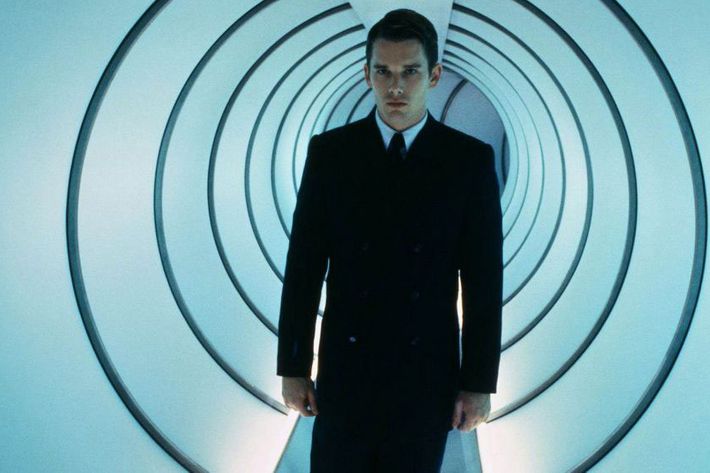
Colleen Atwood, Gattaca
Colleen Atwood, who’s currently pulling double duty on two sets — the Fantastic Beasts sequel and Tim Burton’s Big Ears — worked on Gattaca two decades ago, but still remembers exactly how she drew a navy blue–and–silver color scheme into each costume. “I stayed with cool colors. It was very successful with the architecture of the film,” she said. “Jude [Law] played a guy without a piece of his leg, so we were trying to make his clothes look like they hung off him and he was in a wheelchair. There were a lot of ins and outs with taking his character to a different place, with an old world decadence in a new world. I took the purest design from the ’30s and combined it with what was contemporary at the time in the costumes.”
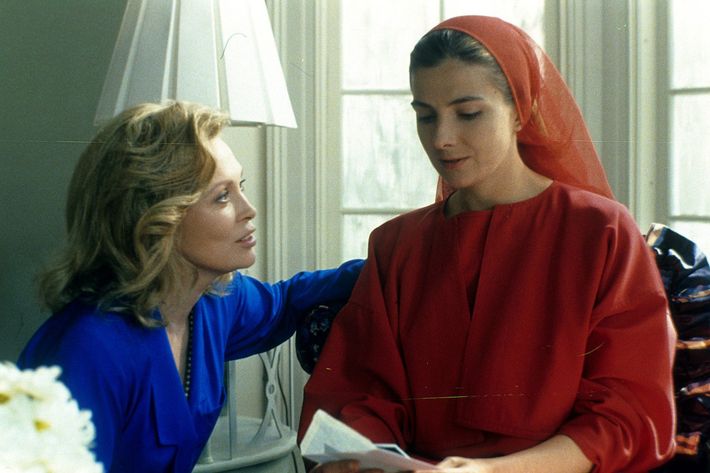
Before Gattaca, Atwood worked on the original onscreen adaptation of The Handmaid’s Tale, directed by Volker Schlöndorff. In that version — which starred Natasha Richardson, Faye Dunaway, and Robert Duvall — Schlöndorff passed on the headpieces that have defined the look of the Hulu adaptation. “He didn’t want to go back, he wanted it to be contemporary and of the moment,” Atwood said. “We used the red color that’s obvious from the book. I stayed visually through the eyes of the ’80s. He didn’t want to do headdresses, so we did the hair strictly pulled back [with] a clean look. Logistically, it was so different than what they’re doing right now for TV, which I think is really great.”
There’s a natural inclination to overdesign the future, Atwood said, which is a difficulty specific to this genre. “You want [the design] to be something that’s believable now, that you can connect with,” she said. “[Don’t make] everything have bells and whistles on it when it doesn’t need to.”
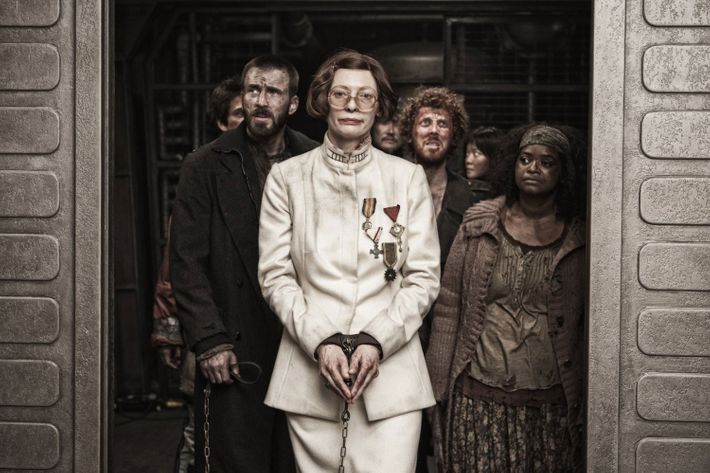
Catherine George, Snowpiercer
An ice age wiped out the world’s population, and now the last survivors live on a bullet train that circles the globe in Snowpiercer, Bong Joon-ho’s post-apocalyptic dystopia. People from all different social classes and nationalities live onboard, which gave costume designer Catherine George a lot to work with: in one car, an aquarium serving sushi; in the next, a rave, or a hair salon servicing the bourgeoisie. “Because of the situation on the train, people had come from all over the world to get on this train to escape the frozen tundra,” George told Vulture.
Car by car, George got to imagine separate worlds with separate dress codes. For one car, she sourced clothing from Alaska to be worn by Inuit characters. In another, she played around with the opulence of the ’20s and ’30s for an “Orient Express feeling.” For the cars at the tail end, where the narrative begins, George paid special attention to making sure everything looked sufficiently worn. “I wanted to make sure it had a global feel to it and all the pieces felt eclectic. They had to use all the resources that were left on the train.” Via email, George’s head ager-dyer Katalina Iturralde, said that everything was “over-dyed,” to get uneven patterns and stains.
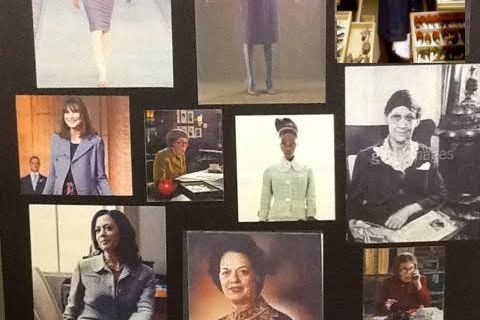
For Tilda Swinton’s character, Minister Mason, a cruel, bug-eyed, second-in-command charged with keeping order among the train’s passengers, George and Swinton drew inspiration from an unexpected figure: Muammar Gaddafi. “He was a bit of an inspiration for her uniform, all the medals and badges that she wears,” George said. “We found a photo of him coming off a plane in Italy and he had made his own medals and badges. It looked like he had made them on the plane. Mason had somehow made herself a row of badges and medals. That was funny — she was a combination of that kind of character and these other sort of Margaret Thatcher types.”
Reuse and reinvention played heavily into George’s initial sketches and the costumes’ construction. Only one character’s clothes were allowed to feel uniquely luxurious: the engineer, played by Ed Harris. “[His costume] came from an early concept art sketch that was very moody and rough … it just reminded me of a robe, and thinking that this man was so privileged: He didn’t have to get dressed if he didn’t want to,” George said. As other costumes were put together from scratch or leaned into their luxury, Harris’s pajama set was an timeless outlier: “It was all about comfort for his character,” George said.


